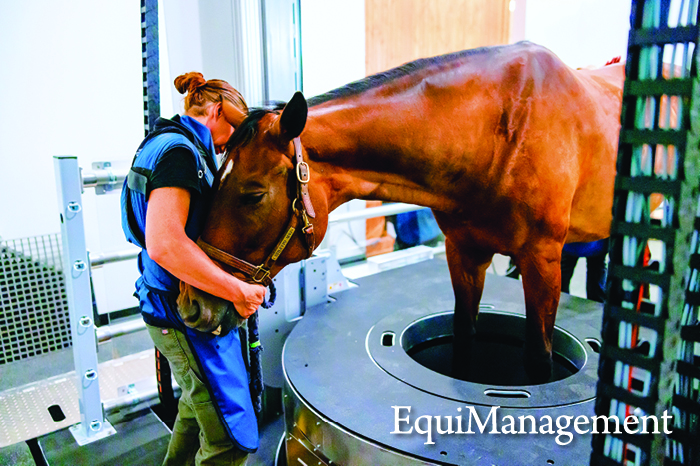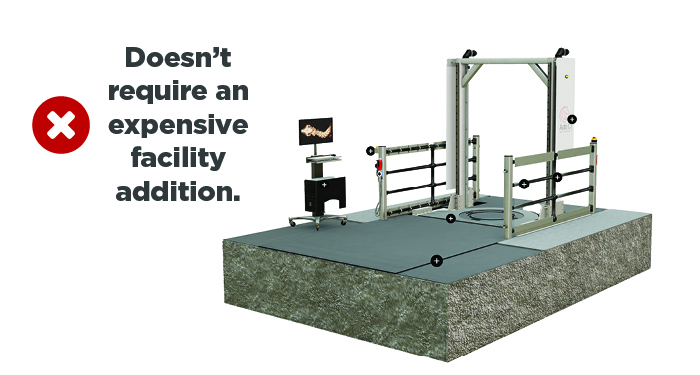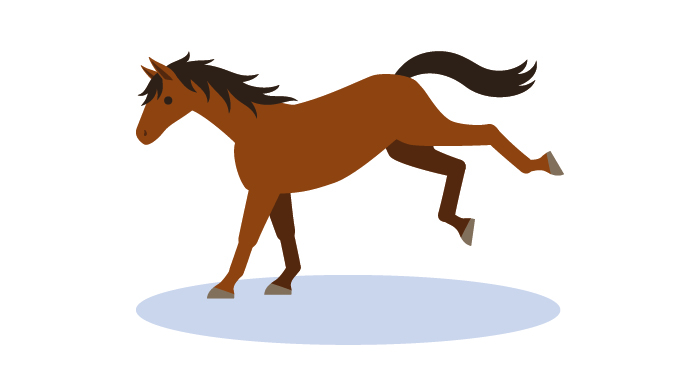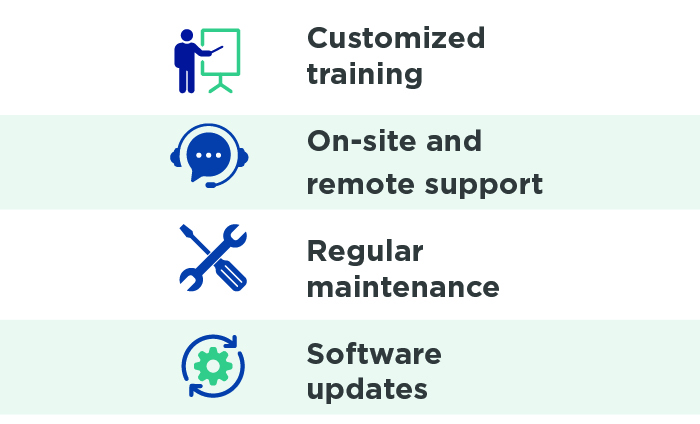

Why add an equine standing CT unit to your practice?
- Improved diagnostic capabilities
- Minimizes the need for general anesthesia
- Rapid image acquisition
An equine standing CT might be more practical, sustainable, and financially feasible than you think.
Things to consider:

Installation and Placement
- Needs < 2 standard stalls worth of space.
- Plug-and-play integration into existing clinics.

Durability
Equine standing CT is designed for real-world applications, including being urinated on or kicked by horses.
Safety
Equine-specific CT units emit much less radiation than human CT machines, so handlers can remain in the room, reducing the need for additional lead shielding.


Power Requirements
- Plugs into a standard single-phase outlet (same as a washer-dryer).
- 150 scans requires less electricity than running a 9.5-watt LED light bulb for one week.
- 1 year of energy usage = 1 day of solar panel power production.
Costs
Consider your financial options:
- Outright purchase
- Subscription-based lease
- Revenue-sharing agreement
*Don’t forget to factor annual servicing costs into your budget.
Some companies also provide:

Equine standing CT isn’t just for large referral clinics and university settings! Smaller practices or mobile vets can partner on a unit to bring CT scan to an area.

Take-Home Message
An equine standing CT can enhance a practice’s diagnostic capabilities and expand patient care offerings without costly energy expenditures, building additions, or excessive radiation. Factor in system performance, ease of use, and post-installation service and maintenance when choosing a CT partner.

![[Aggregator] Downloaded image for imported item #18375](https://s3.amazonaws.com/wp-s3-equimanagement.com/wp-content/uploads/2025/09/30140031/EDCC-Unbranded-26-scaled-1-768x512.jpeg)
![[Aggregator] Downloaded image for imported item #18890](https://s3.amazonaws.com/wp-s3-equimanagement.com/wp-content/uploads/2025/11/17113845/EDCC-Unbranded-3-scaled-1-768x512.jpeg)

